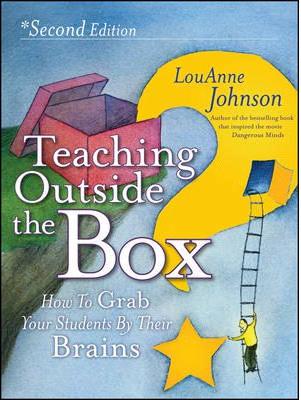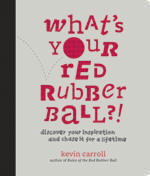BECOME A MEMBER
Join Pivotal Gold

and you have
private access to free and heavily
discounted resources (including one
book a month)
More information here
FREE
NEWSLETTER
Get news of the
latest games, book reviews, articles
and more that have been added to the
website.


(We do not share, give or
sell email addresses)
Getting Involved in Your child's Education
When
parents are involved in their children's education, kids do better
in school.1. Want to learn how to
help your child achieve and succeed? Read on! You'll learn
why involvement is so important and suggestions
for
how to get involved.

Looking at the processes and actions embedded
within various team and individual sports is a great way to get
exposed to concepts and ideas from physics, engineering, and any
other number of basic and applied sciences.
|
|

|
Weather Station
Grade Levels: 3 - 5
With a student-made weather station (that tracks temperature,
rainfall, wind speed and direction, barometric pressure, humidity)
and/or the Internet, students measure weather in a variety of ways,
write about procedures, make predictions, and use averaging.
Objectives
- Students will observe and describe weather.
- Students present data about weather through journals,
discussions, and graphs.
- Students will make predictions by averaging.
Materials
- Computer with Internet connection
- Thermometer
- Journal
Procedure
- Discuss local weather; have students predict local weather based
on their current observations.
- Set up weather station either in the classroom or using Internet
resources.
- Have students make the recording materials.
- Decide how often students are going to make the measurements,
e.g. once a day, twice a day. The more detailed and accurate their
measurements, the more specific the picture of the patterns will be.
- A ruled ledger or notebook is an ideal place to record the
measurements. List measurement types down the side (one event per
line) and print the dates across the top to create a simple grid.
See sample grid below.
- Use the data collected to create graphs and find averages of
each measure.
- Students can also write about predictions, how they made the
weather station, and the events they observed.
The grid will look something like this:
| |
Date |
Date |
Date |
Date |
Date |
Date |
| Temperature |
|
|
|
|
|
|
| Precipitation |
|
|
|
|
|
|
| Wind Dir. |
|
|
|
|
|
|
| Wind Speed |
|
|
|
|
|
|
| Humidity |
|
|
|
|
|
|
| Pressure |
|
|
|
|
|
|
| Cloud Type |
|
|
|
|
|
|
Hint: Numerical data can also be entered into a simple
spreadsheet-type program and manipulated to create impressive visual
charts and graphs. Students can also create a wall chart to display
data.
Alternative methods for gathering data:
If the weather station is missing one or more data-collection devices,
students can fill in the blanks by either estimating wind speed using
the Beaufort Wind Scale or finding the missing information in a local
daily newspaper. You may also find information on a weather-related
website.
Beaufort Wind Scale to estimate wind speed
| Speed |
Description |
| Under 1 |
Calm; smoke rises vertically |
| 1-3 |
Smoke drift shows wind direction; weather
vanes remain still |
| 4-7 |
Wind felt on face; leaves rustle; vanes
begin to move |
| 8-12 |
Leaves, small twigs moving; weather vanes
start to move |
| 13-18 |
Dust, leaves raised up; small branches move |
| 19-24 |
Small leafy trees begin to sway |
| 25-31 |
Large branches of trees moving; whistling in
wires |
| 32-38 |
Whole trees in motion; wind resistance felt
in walking |
| 39-46 |
Twigs and small branches broken off trees |
| 47-54 |
Slight structural damage occurs; slate blown
from roof |
| 55-63 |
Rarely occurs on land; trees broken;
structural damage occurs |
| 64-72 |
Very rare on land; widespread damage |
| 73+ |
Massive violence and destruction |
| |
|
 Teaching Outside
the Box: Teaching Outside
the Box:
How to Grab Your
Students By Their Brains
by LouAnne Johnson
This book is a must for beginning teachers and for pros who need
new ideas. It combines street smart practicality
with the creative thinking we need to reach kids
today.
Try RocketReader Kids


|
The ultimate child reading tutor. Ages 4
to 8.

What is it that
excites you, makes
you smile and fuels
your dreams?
Click on
the picture for more about this
inspirational book for children.
For
children, sight word
recognition is an
important step to
being able to
efficiently learn to
read. If they don’t
have to stop and
consider what each
word is, they will
have the freedom to
comprehend the
meaning and context
of sentences and
paragraphs.
Consequently, it’s
critical for
parents,
babysitters,
guardians,
grandparents and
educators to help
beginning readers
Mapping our world
Discover a unique perspective on the
world with this interactive
whiteboard resource for ages 8-14.
Carbon
Smart

Calculate a household's
greenhouse gas emissions
online by answering
questions about the use of
transport, home appliances,
and wastes. Also find
out what can be done to
reduce a carbon footprint.
|